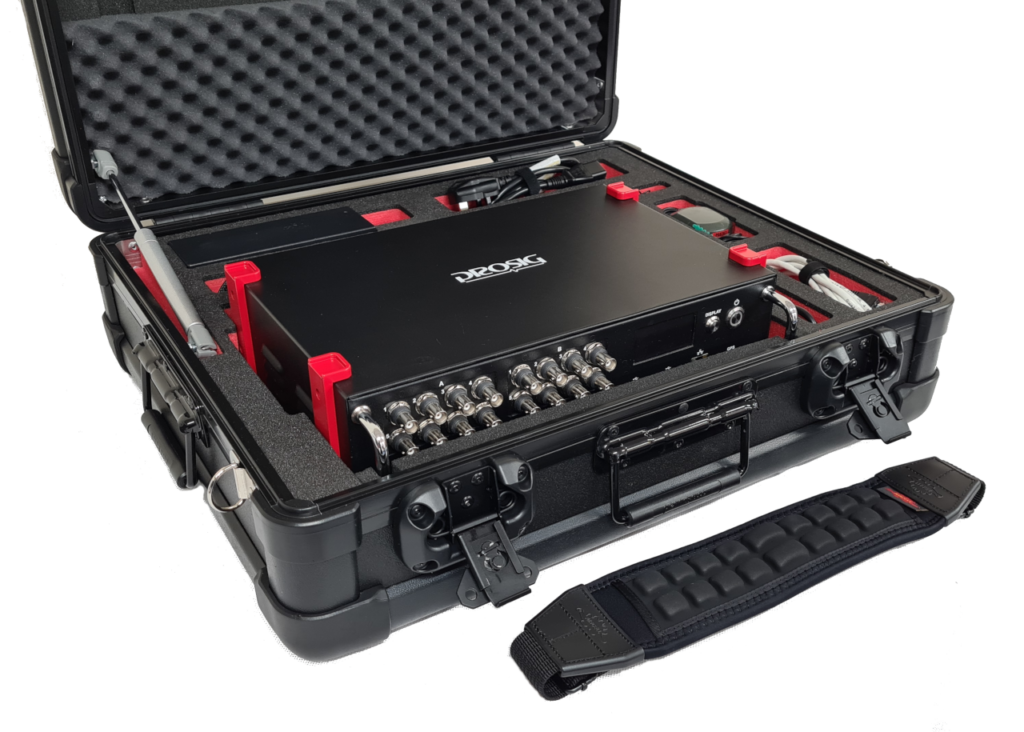[An Introduction To Vibration Analysis – Part 1]
Introduction
For professionals delving into the worlds of automotive, aerospace, or industrial engineering, vibrations are not just mere oscillations; they’re a symphony of mechanics, mathematics, and materials science. This article provides a comprehensive look into the basics of vibration analysis, a crucial tool in the toolbox of many engineers. Future posts will explore these topics in more detail. Why not sign up for our mailing list and ensure you don’t miss future articles.
Deciphering Vibrations
In essence, vibration is an oscillatory motion of a body around a fixed point. Think of it as the rhythmic dance of machinery parts or the oscillation of a bridge under the wind. When subjected to an external force, almost everything in our engineered world exhibits some form of vibration.
Categorizing Vibrations:
- Free Vibration: Occurs in the absence of any external forcing function, driven solely by the system’s inherent forces. It’s like setting a pendulum into motion and letting it swing undisturbed.
- Forced Vibration: A system subjected to a continuous external force exhibits forced vibration. Industrial machinery, often powered by motors producing a constant force, epitomizes this.
- Damped Vibration: Real-world systems lose energy over time due to various resistive forces. This results in damped vibrations where the amplitude decreases gradually.
Natural Frequency: More than Just a Number
Every mechanical system resonates powerfully at a specific frequency, called its ‘Natural Frequency.’ Engineers keep a wary eye on this, as exciting a system at or near its natural frequency can lead to resonance, resulting in potential system failures. Historical failures, such as the Tacoma Narrows Bridge tragedy, underline the significance of understanding and avoiding resonance.
Key Parameters in Vibration Analysis:
- Amplitude: The measure of vibration’s magnitude, commonly captured as peak or RMS values.
- Frequency: Representing the oscillations per second, it’s a critical parameter denoted in Hertz (Hz).
- Phase: Indicating the position of a vibrating body concerning a reference, phase provides insights into synchronous or asynchronous behaviours of vibrating entities.
To navigate the oscillatory world, understanding these parameters is imperative.
The Imperative of Vibration Analysis:
From the smooth hum of a jet engine to the silent operation of high-speed elevators, behind these experiences lies intricate vibration analysis. Here’s why it matters:
- Fault Diagnosis: Vibrations can highlight irregularities, aiding in early fault detection and prevention.
- Lifecycle Estimation: One can predict machinery lifespan by studying vibration patterns, and optimizing maintenance schedules.
- Operational Excellence: Ensuring that machinery operates within designed vibration limits guarantees efficiency and safety.
Advertisement
Sense | Capture | Analyse
From sensors to DAQ to analysis & reporting, Prosig supports your entire measurement chain



Whether you need accelerometers from our colleagues at DJB Instruments, microphones, pressure sensors or something else, Prosig can supply them as part of your system. Or you can use your own. Discover more about the Prosig hardware and software range.
Tools and Techniques:
Modern vibration analysis employs a suite of tools. Accelerometers stand out as the frontline soldiers, translating mechanical vibrations into interpretable electrical signals. These are then translated into digital data by a data acquisition system (DAQ) using analogue-to-digital converters (ADCs). Subsequent analysis often involves Fourier Transforms, a mathematical method to dissect these signals into constituent frequency components, giving clarity on a system’s vibrational behaviour.
Closing Thoughts:
Vibration analysis is an intersection of mechanics, mathematics, and intuition. Whether you aim to design the next quiet car cabin, a more efficient turbine, or simply ensure plant machinery’s longevity, understanding the basics of vibration analysis is pivotal.
For those looking to delve deeper, specialized tools and software now provide simulation capabilities, offering a glimpse into a system’s vibratory behaviour even before its physical existence.
Some Recommended Reads:
- “Mechanical Vibrations” by S.S. Rao: An excellent resource for understanding the depth and breadth of vibrations.
- “Fundamentals of Vibrations” by Leonard Meirovitch: A comprehensive guide to vibrations, offering a balance between physical fundamentals and mathematical concepts.
- “Engineering Vibration” by Daniel J. Inman: A reader-friendly book that provides real-world applications of vibration principles, making it suitable for budding engineers.
- “Vibration of Mechanical Systems” by Alok Sinha: A systematic introduction to vibrations in mechanical systems, focusing on applications in aircraft structures and turbomachinery.
Feedback and discussions are encouraged in the comment section. Dive deep, analyze thoroughly, and remember – in every oscillation, there’s information waiting to be decoded.
Latest posts by Chris Mason (see all)
- Rotating Machinery Vibration Analysis: Keeping Your Machines Humming Along - November 27, 2023
- Vibration Control and Isolation: A Comprehensive Guide for Engineers - November 6, 2023
- Modal Analysis in the Real World - October 6, 2023




